Chris Roams
Travel, Adventures, and Photography
Emergence
January 01, 2009
Some people may think I'm crazy for going down into the Grand Canyon in the middle of winter. I think you'd have to be crazy to go any other time of year. The route I took is in what the park calls "The Corridor". The corridor encompasses the most popular trails between the South Rim visitor center and the North Rim visitor center, and the 3 campsites along those trails. The National Park Service sets strict quotas on how many people can enter and camp on a given trail at any time hence the "Backcountry Permit", basically my permission slip to be down there for anything other than a day hike. I walked in when the office opened on Tuesday and was on the trail 20 minutes later with 2 nights in the corridor and 40-50 degree temperatures forecast for the bottom. In the office I was surrounded by people who were standing in line trying to get corridor permits for May, when the temperatures at the bottom would probably be in the low hundreds. This makes absolutely no sense to me, I mean they're already there, in the park, on a perfect day, and all they would have to do is ask for a permit "now" rather than "6 months from now".
Whenever I get back to civilization after climbing some mountain or traversing some canyon I always feel like a conquering general triumphantly returning from battle. As I make the long walk back to the car, battered, bruised, and stinking a stink that you can only stink after not having showered for multiple days of intense physical activity I hope that the masses in t-shirts and jeans take notice and realize that there is a whole world out there beyond the paved sidewalks and railings with interpretive signs. Unfortunately, sometimes they do.
The route I took was a big loop, and the 2 halves of that loop were very different from one another. The South Kaibab Trail that I followed on the way down follows the peak of a ridge that juts out into the canyon. As soon as you are away from the rim you are completely exposed to the sun, and even in winter with the temperatures barely in the 30's you can feel how powerful it is. There is no water on this trail, natural or otherwise, as it covers 4,780' of elevation over 7 miles. Trying to hike up it in summer in triple-degree heat would be near suicide for anyone even slightly less than completely prepared. There are no camping areas on this trail, as trying to camp without a water source would only hasten the inevitable.
Getting to the bottom is an experience in itself. You can't see the river from the trailhead, just the plateaus that jut out from under the rim. You don't actually see the river until you make it out to the edge of one of the plateaus, and even then it's just a peek. Bright Angel Campground is on the north side of the river and the means of crossing it are 2 suspension bridges, appropriately named the Black Bridge and the Silver Bridge. Heading down South Kaibab and walking through the tunnel to the Black Bridge gives notice that as harsh as the canyon floor is it is not a wilderness, people have come to this place and conquered it. A few yards beyond the north end of the bridge are the foundations of ancient native ruins that remind you that the guys who built the bridges weren't the first ones to conquer it either, not by far.
The Bright Angel Trail that I took on the way up follows the bottom of a side canyon which contains not only a natural creek, but also the water main and pumping infrastructure that feeds the South Rim visitor center from a spring near the north rim. The trail is almost completely sheltered from the sun by the steep canyon walls and water is plentiful here, although filtering water from the creek wasn't even necessary thanks to the taps conveniently placed on the water main. The Indian Garden campground about halfway back up to the rim is like a little oasis on the creek, surrounded by cottonwood trees. This campground and its reliable water supply are a key stopping point for the return trip. Above the camp the canyon comes to a very steep headwall. Rather than the constant incline of South Kaibab, the Bright Angel gently rises until it comes to the headwall, at which point it turns into switchback hell as it desperately tries to climb up the near-vertical face of the canyon. I remember very clearly reaching the spot where I realized "Wait, I'm going to climb that!?!". Up until that point I was sure the trail must go around some unseen corner and up some side canyon rather than the almost perfect wall I had been staring at all morning.
There is one thing the two trails share in common: you could never get lost on them. All you have to do is follow the never-ending stream of mule crap. The Bright Angel Campground at the bottom of the canyon is just opposite the Phantom Ranch. Those visitors who want to see the bottom of the canyon up close and personal but don't care to walk can ride a mule all the way and back for a few hundred bucks. For a few bucks more you can have another mule hump down up to 30 pounds of whatever junk you care to have with you at the bottom of the canyon. The Phantom Ranch with its cabins, hot meals, and full service bar cater to the mule tourists. How does all that food, booze, and the resulting garbage get back and forth you ask? Why, more mules of course. I was fortunate enough to be there during the "off-season". I can only imagine what it's like in the summer when there are many more mules and their turds are baking in the sun rather than freezing into the snow.
Snow isn't what most people think of when they think of "Arizona" or any desert in general, but the top third of the canyon is currently covered in snow. This is a desert so there is very little moisture here, but the rim is also at 7,000' elevation and stays cold throughout the winter so what does fall tends to fall as snow and stick around for a while, and it adds up over time. Just below the south rim is where the sun never shines throughout the winter, this makes the snow situation even worse.
Let me say straight away that I don't really like canyon hiking or "canyoneering" as it's called. The problem is that it usually takes twice as long to get up a hill as it does to go down it and in a canyon what goes down must come back up. When you climb a mountain and have to abort you go downhill, which means you can usually get out of trouble twice as fast as you got into it. In a canyon you have to abort up, which means it takes twice as long to get to safety. The Grand Canyon, just like any desert, is definitely a dangerous place. The canyon only makes it worse because it is a trap. We humans need lots of water to survive, especially when we try to work in the heat. The harder a person struggles to get out of the canyon the more water he requires, but all the water is down low here. The more successful his struggle upwards the further he is moving away from the water that he needs to survive. It scares me how quickly and easily I got down to the bottom, it only took a bit over 4 hours. As expected getting back out took over twice that in hiking time plus a full night's rest and 3 square meals. I ran across a few people who apparently hadn't figured this out. One that really sticks out in my mind was a day-hiking couple who I ran into on my way down at around 2 in the afternoon after I had been hiking for about 4 hours. Assuming that they could go uphill at the same speed as I came down puts them at the rim a half hour after sunset. Assuming the more likely 8 hour uphill travel time they would reach the rim around 10pm. They had no backpacks or flashlights, were wearing jeans and sneakers (remember kids, cotton kills), and were otherwise completely underdressed for the bitter cold that sets in on the desert once the sun goes down. It hadn't even occurred to them that they might not make it back to the rim, but it didn't phase them. They just plowed on up the hill oblivious, hopefully they made it.
As for the rest of the tourists, it still shocks me at how unprepared some people can be, how over-loaded other people are, and how abjectly stupid others can be. I went down into the canyon prepared to survive on my own if necessary. It was convenient for me that there was clean running water, but the backcountry information indicates that hikers should be prepared to purify water in case the pipes freeze and/or break (not that unlikely with pipes running along the surface in the middle of winter) and I was. I can guarantee that the majority of people in that canyon would have been in trouble if they didn't have tap water available. The irony is that of one family who probably would never think to bring a water filter weighing a few ounces brought not just one but two Coleman propane stoves along with the requisite heavy propane tanks and the family’s 70+ year old grandparents, one of whom required a cane to walk. The father of the family was complaining to me about how tough it was to get the grandparents down into the canyon so I have no idea how they eventually got them out. This of course was eclipsed by the 3 guys walking down into the canyon as I was leaving, two of whom were carrying extremely large duffel bags and the third carrying what looked like a Wal-Mart sleeping bag rolled up with beer cans stuffed in the ends. I saw one of them slip on the ice on a switchback below me as I was rounding a corner, I just kept walking. There was nothing I could say to convince them that there was something wrong with what they were trying to do.
At first it occurred to me that this is a harsh place and people aren't supposed to be here, that we merely survive because of our equipment and infrastructure, but the native ruins make me realize that people are supposed to be here, and they have been for a very long time. The problem we have is quantity, too many people are in this place. They are brought in from all over the world by the busload and trainload, their food is trucked in and carried around by mules, there are pipes laid across the bottom of the canyon to get them water, at one point they even supplemented the water supply with deliveries by train. These people are lulled in by the presence of infrastructure and rangers to protect them. The natives that lived here didn't need buses, or trucks, or pipes, or trains, or even mules. There were just fewer of them, and they didn't exceed the very limited capacity of this place. If they had exceeded it they would have died.
Lest I forget to mention, the canyon itself is a beautiful place. It's tough to notice when you're concentrating on where to put your feet so as to avoid both the ice and mule turds, but every once in a while you get a chance to look up and remember where you are. I somehow managed to take 200 pictures while I was down there. I know I'm going to kick myself for most of them (did I really have to take 3 pictures of that same stupid rock from 3 different elevations?) and most pictures don't do the place justice anyways. They always seem to come out flat, and make 2 very different features look the same. I'll have to sort through them and see which ones really stand out. The lighting is definitely weird down there. The sun doesn't do that whole rise in the east set in the west thing. Instead the sky gets light in the morning, then eventually the sun peeks up over the south rim before ducking back down, and then eventually the sky gets dark again. Beyond the mules and humans I can also attest that the canyon is inhabited by deer, bighorn sheep, and california condors (of which there are only 172 in the wild and I have pictures of 2 of them). The sheep and deer don't really care too much about people (I came face-to-face with a bighorn when I walked around a corner, and a deer nearly stepped on my bivy, with me in it). The condors unfortunately kept their distance, but I took lots of pictures so hopefully a few turned out alright.
All that said, Yosemite is still my favorite.
Top ten things they didn't teach you in Boy Scouts (but probably should have):
1: The air mattress that you meticulously squeezed the air out of at sea level will be nearly fully inflated at 7,000 feet and impossible to remove from its bag
2: The tent that was damp when you went to bed will be frozen in the morning, and impossible to insert into its bag.
3: The tent poles that were damp when you went to bed will be frozen in the morning and impossible to disassemble.
4: Your water filter will freeze, if you let this happen it will cease to be a filter. Keep it in your pocket and sleep with it
5: Water freezes from the top down. If this starts to happen the water at the bottom of your bottle ceases to be useful to you. Store your water bottles upside down and sleep with them
6: It takes about 30 minutes to get dressed in a bivy, plan your midnight pee accordingly or bring an extra empty water bottle
7: When sleeping with both a water bottle and a pee bottle make sure you can tell the difference between them in the dark
8: Titanium sporks will freeze, you don't want to use them in this condition
9: Your sunglasses will freeze, you don't want to use them in this condition
10: Toothpaste will freeze, you don't want to use it in this condition
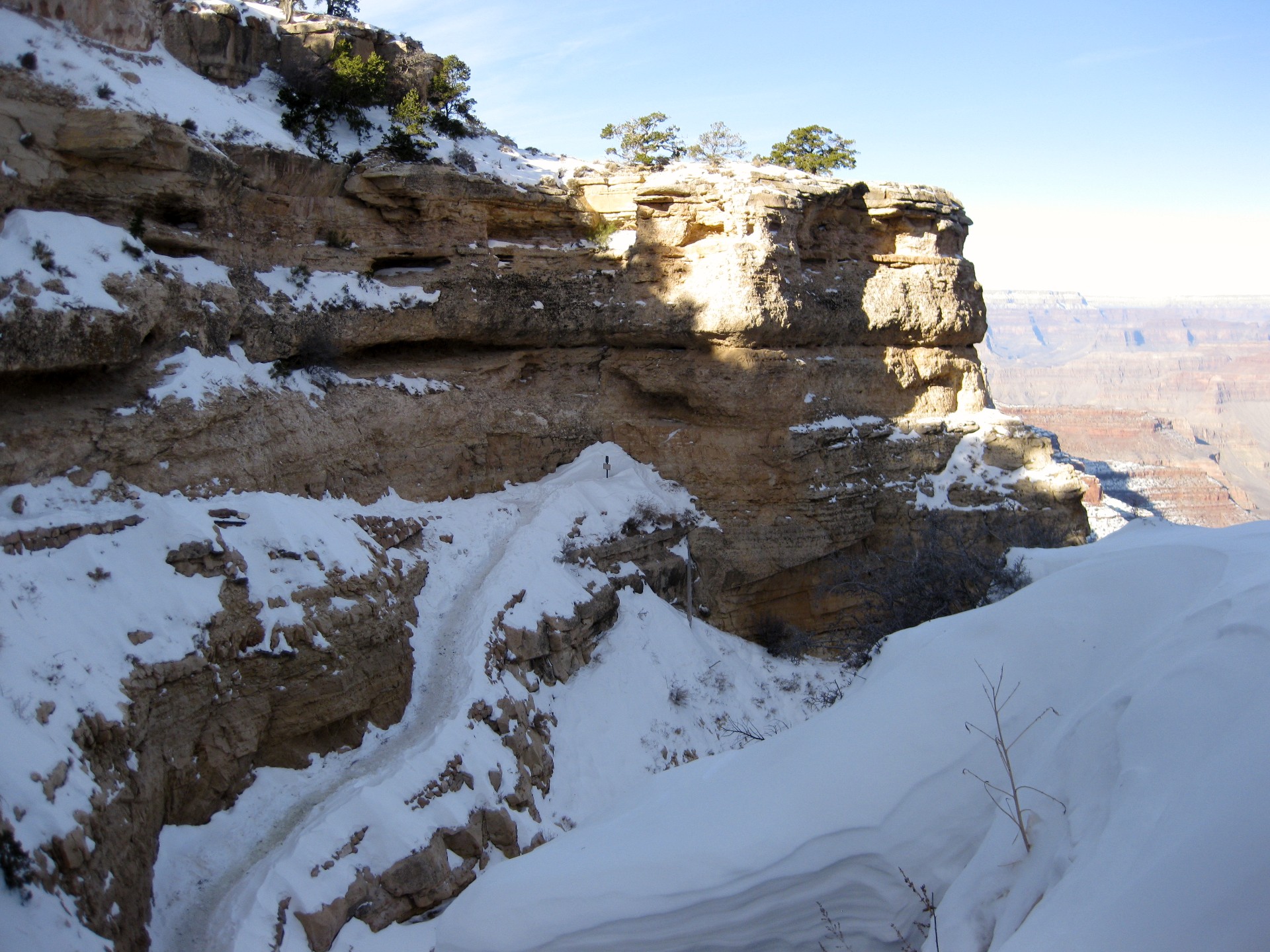
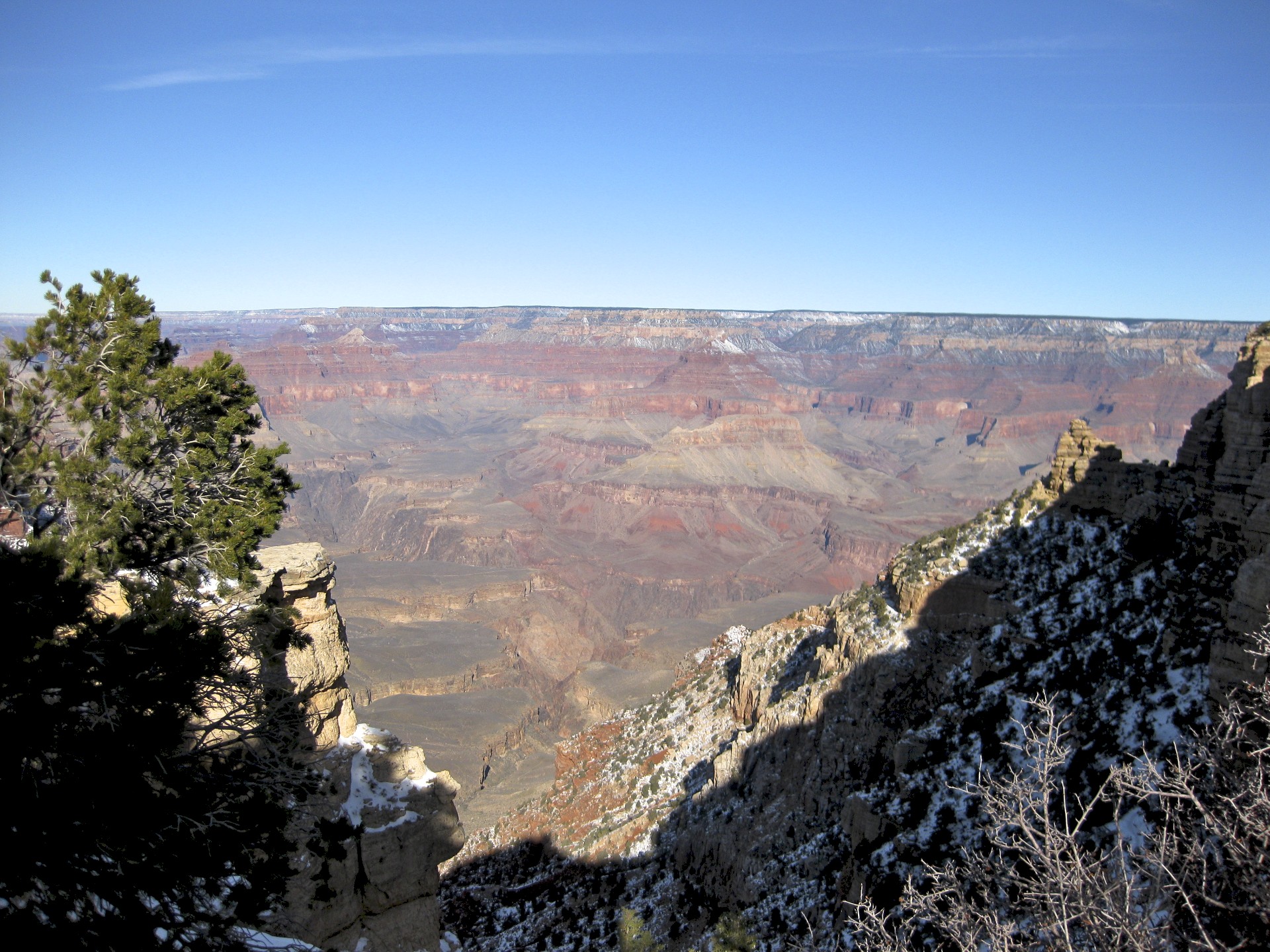
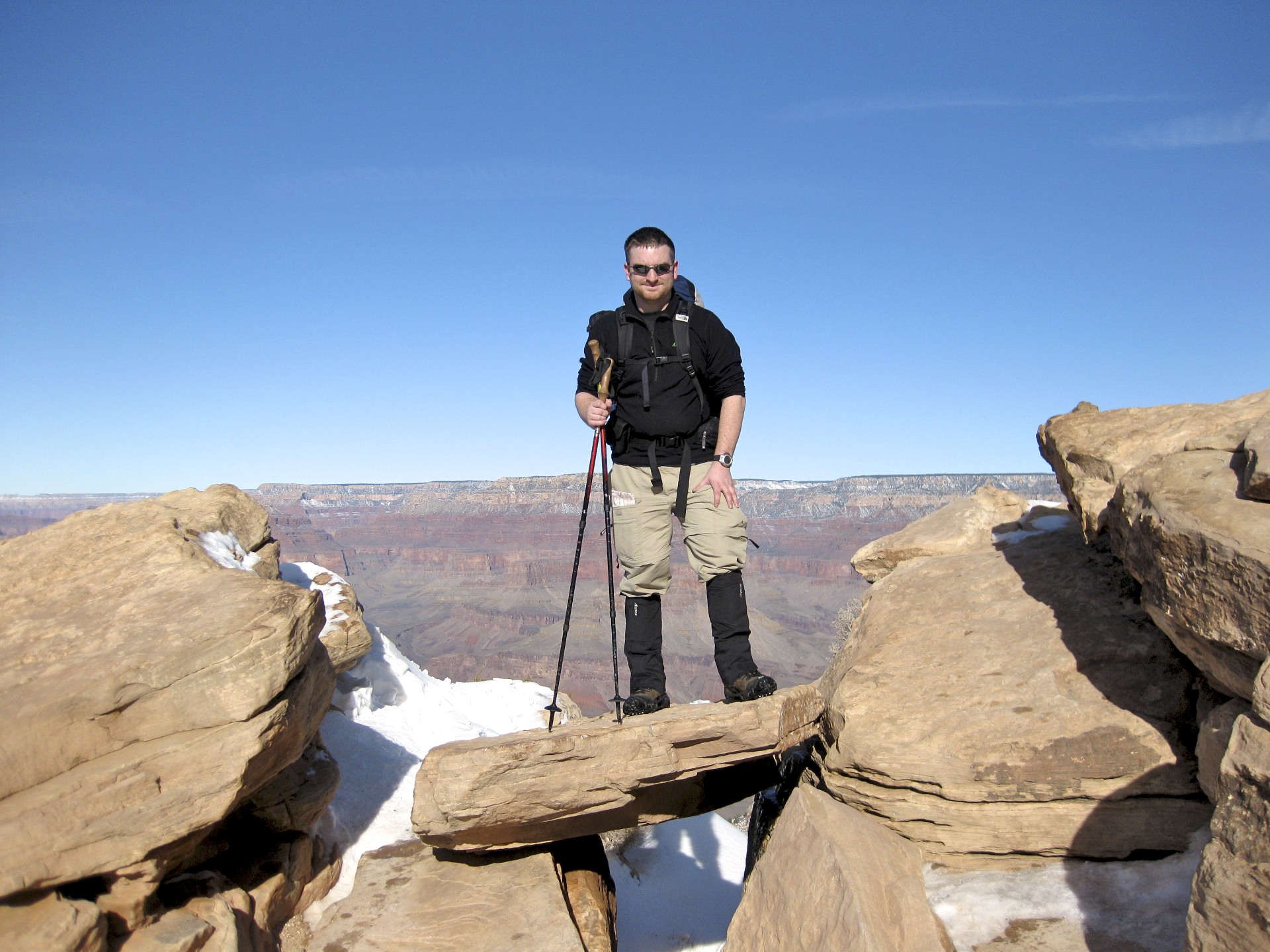
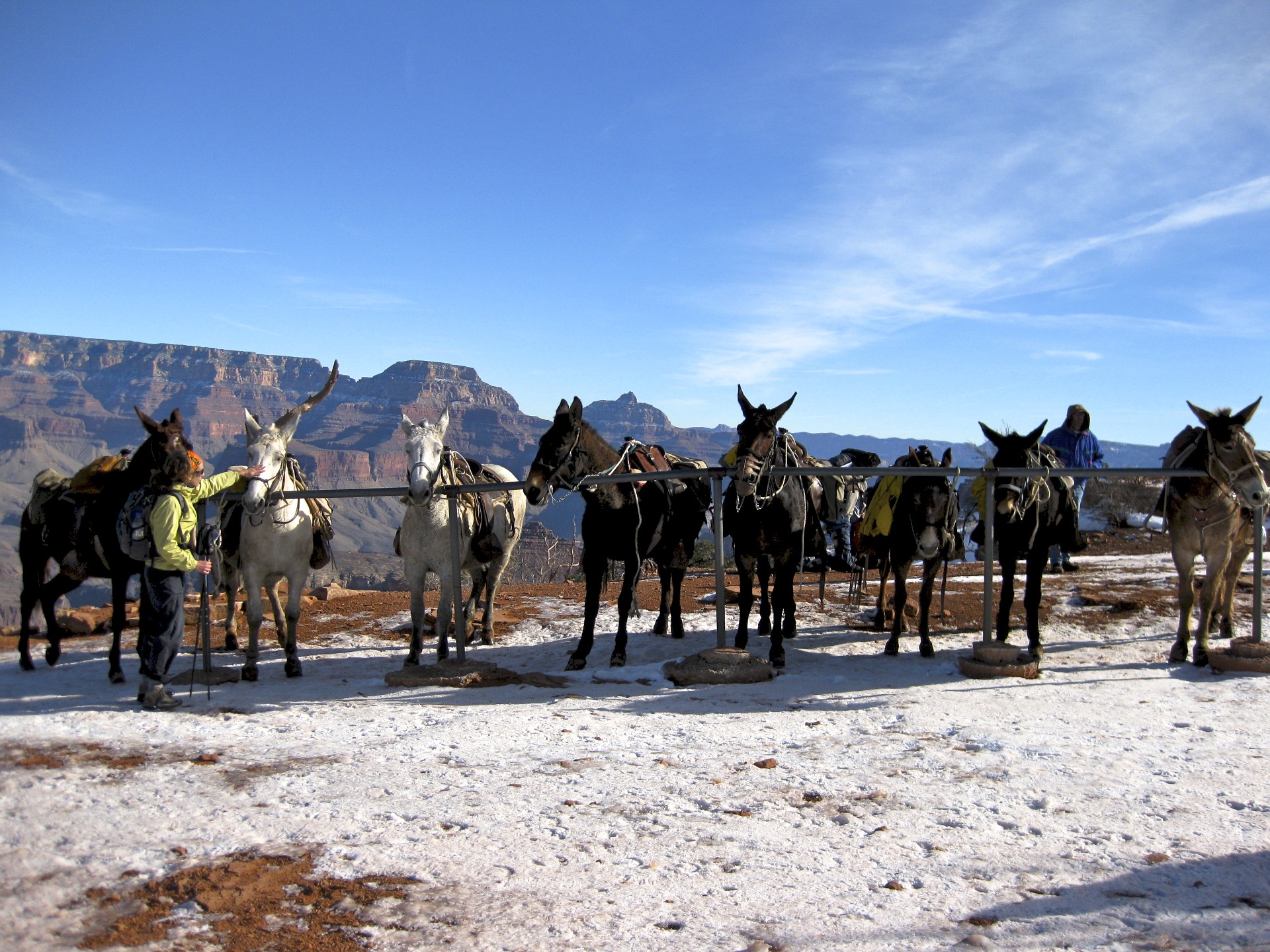
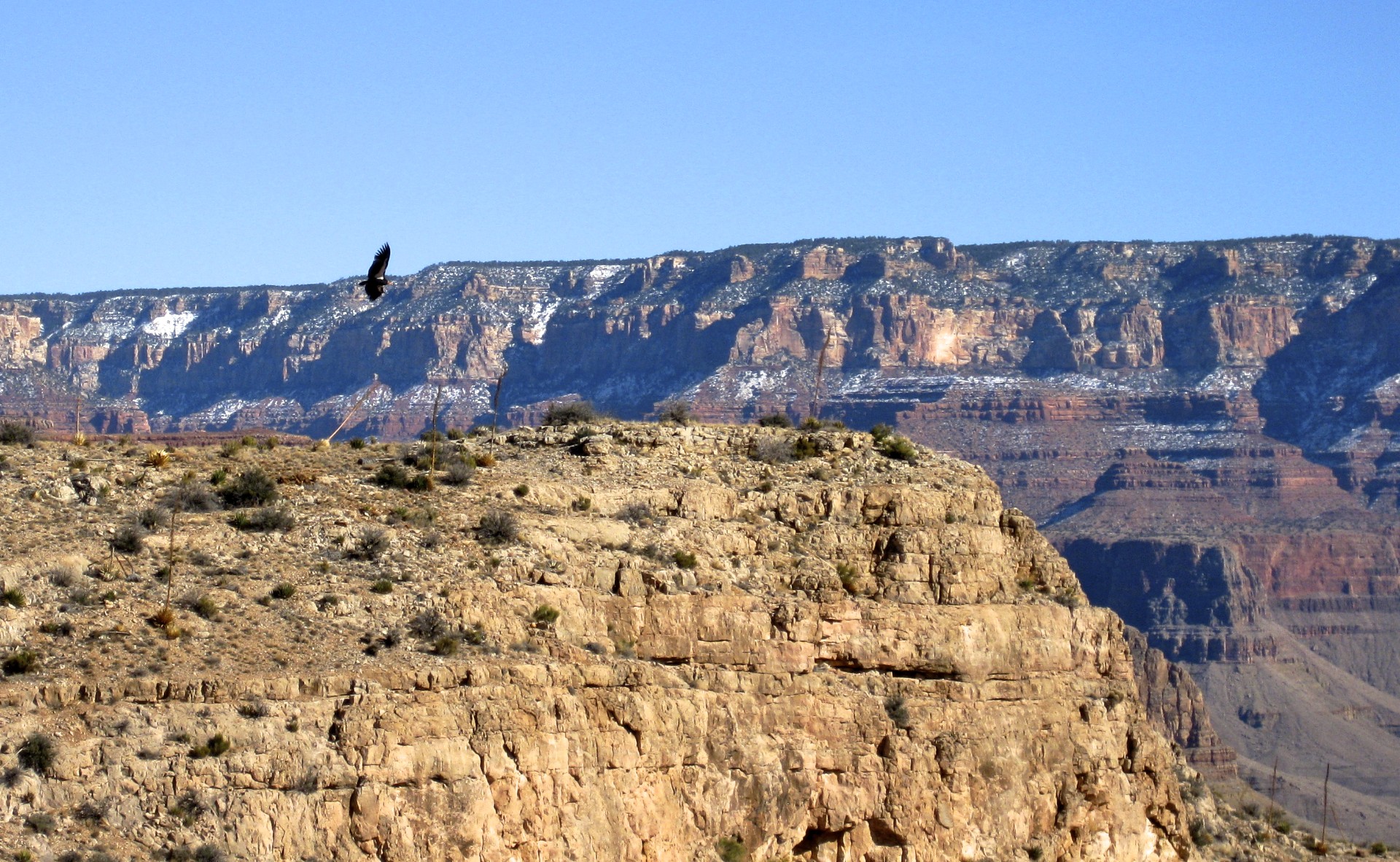
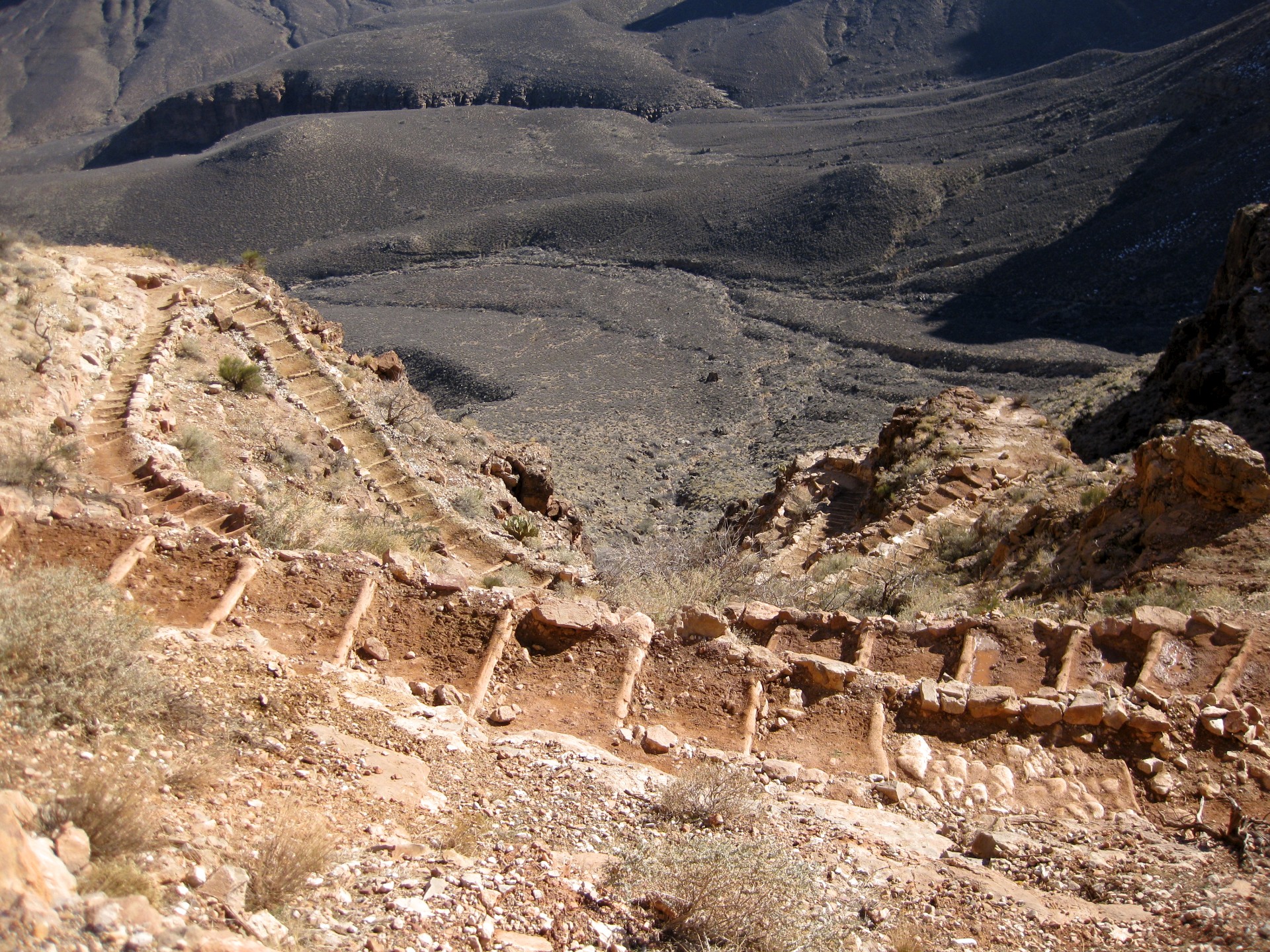
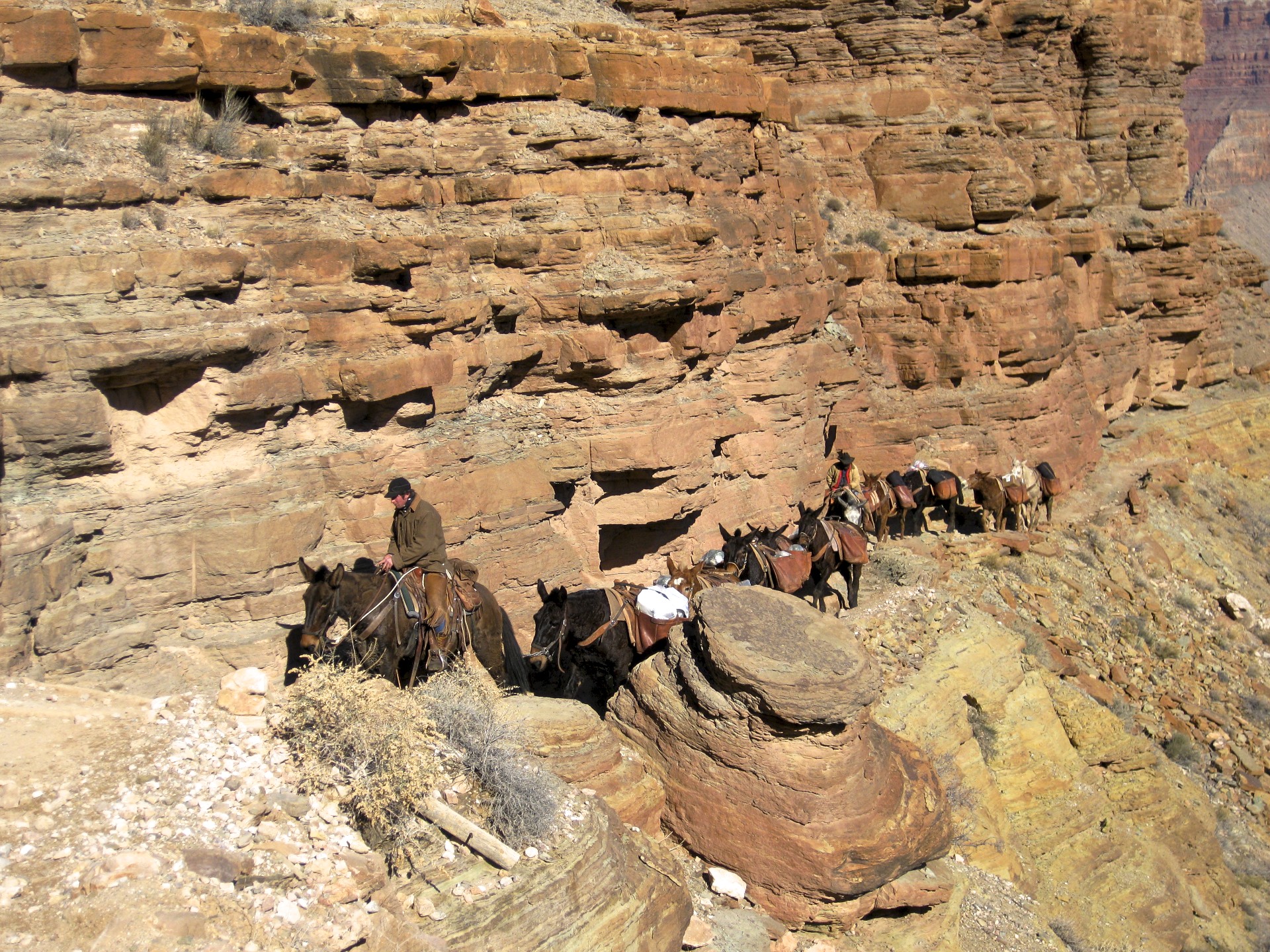


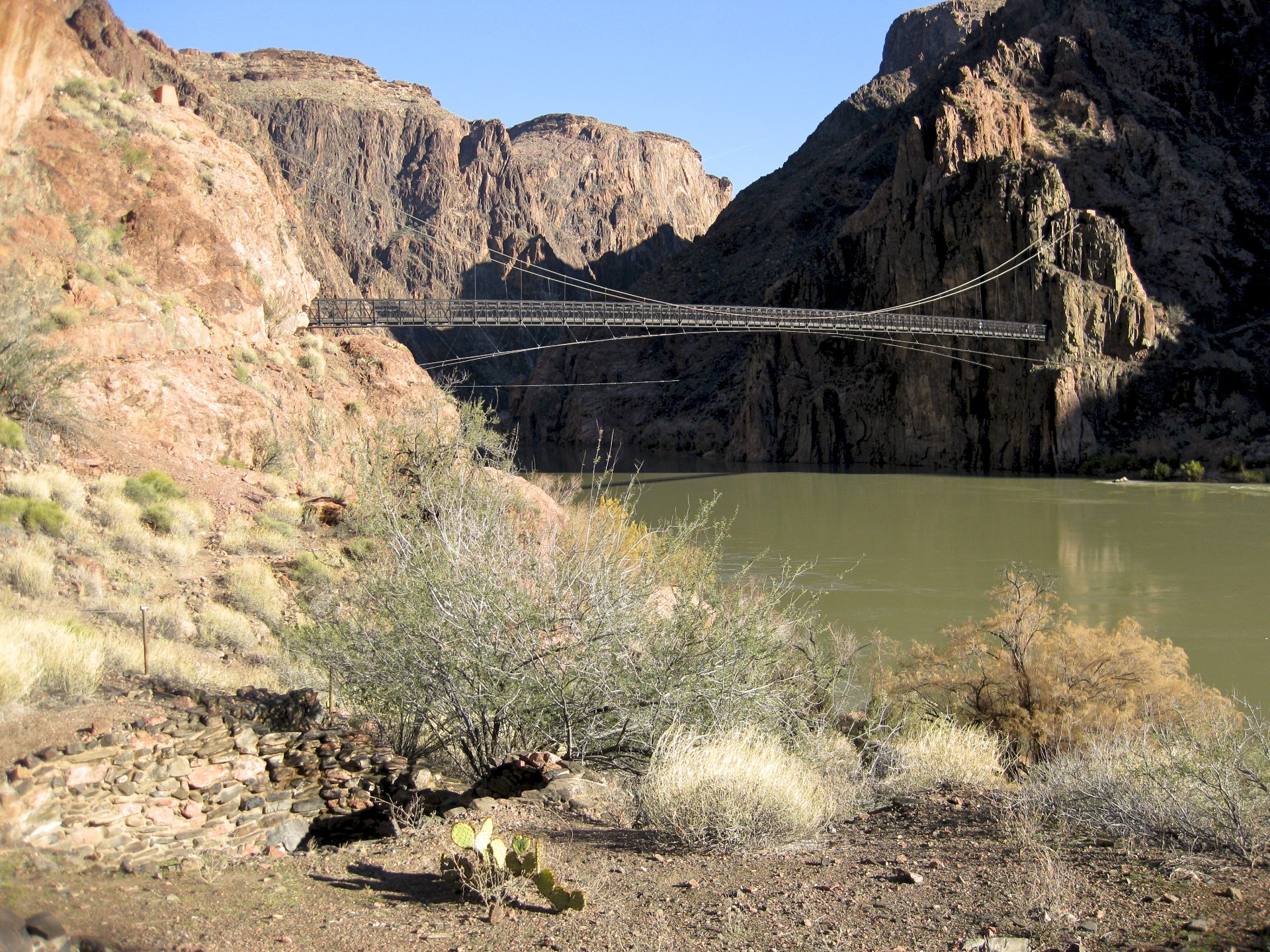
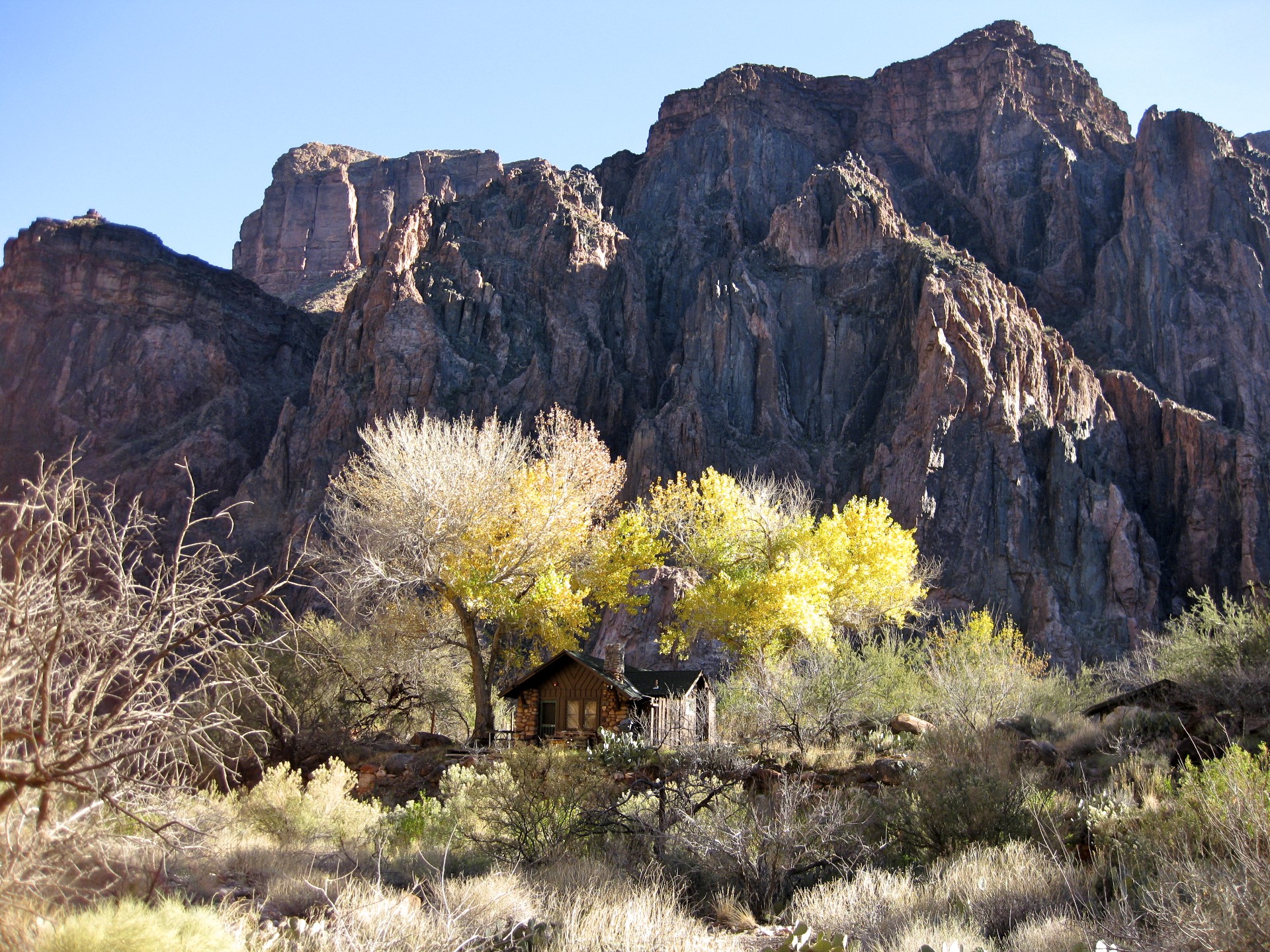
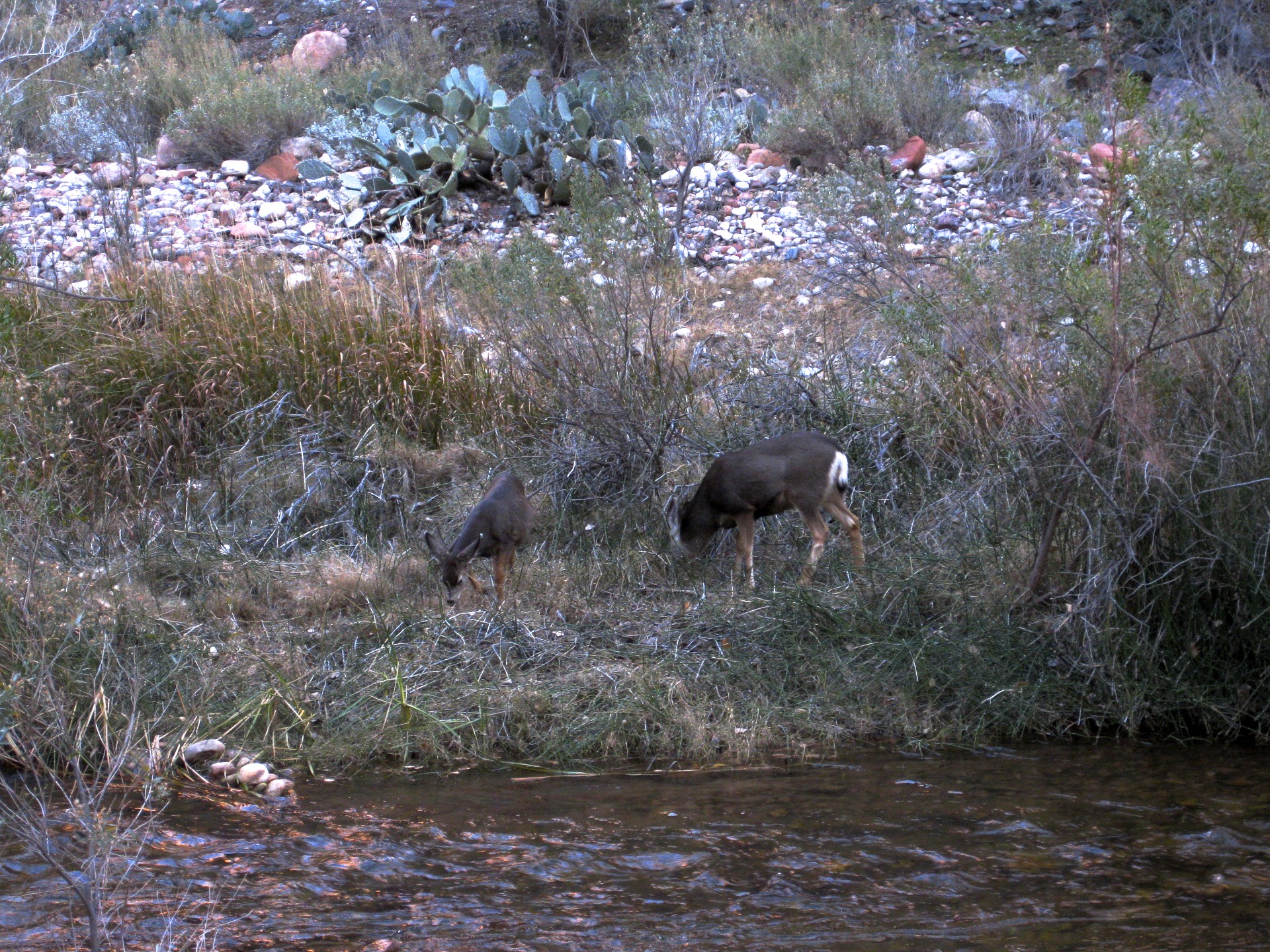
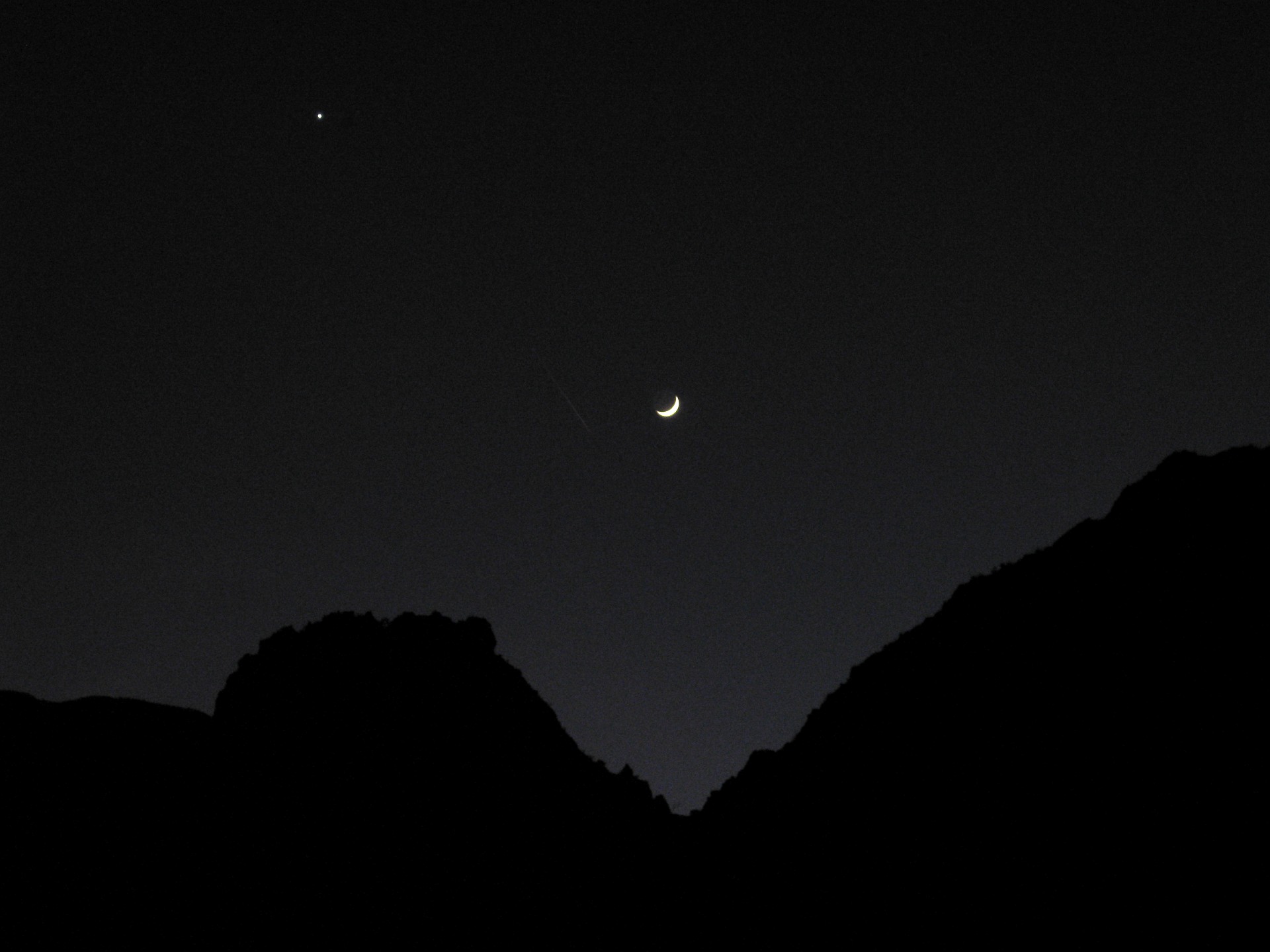
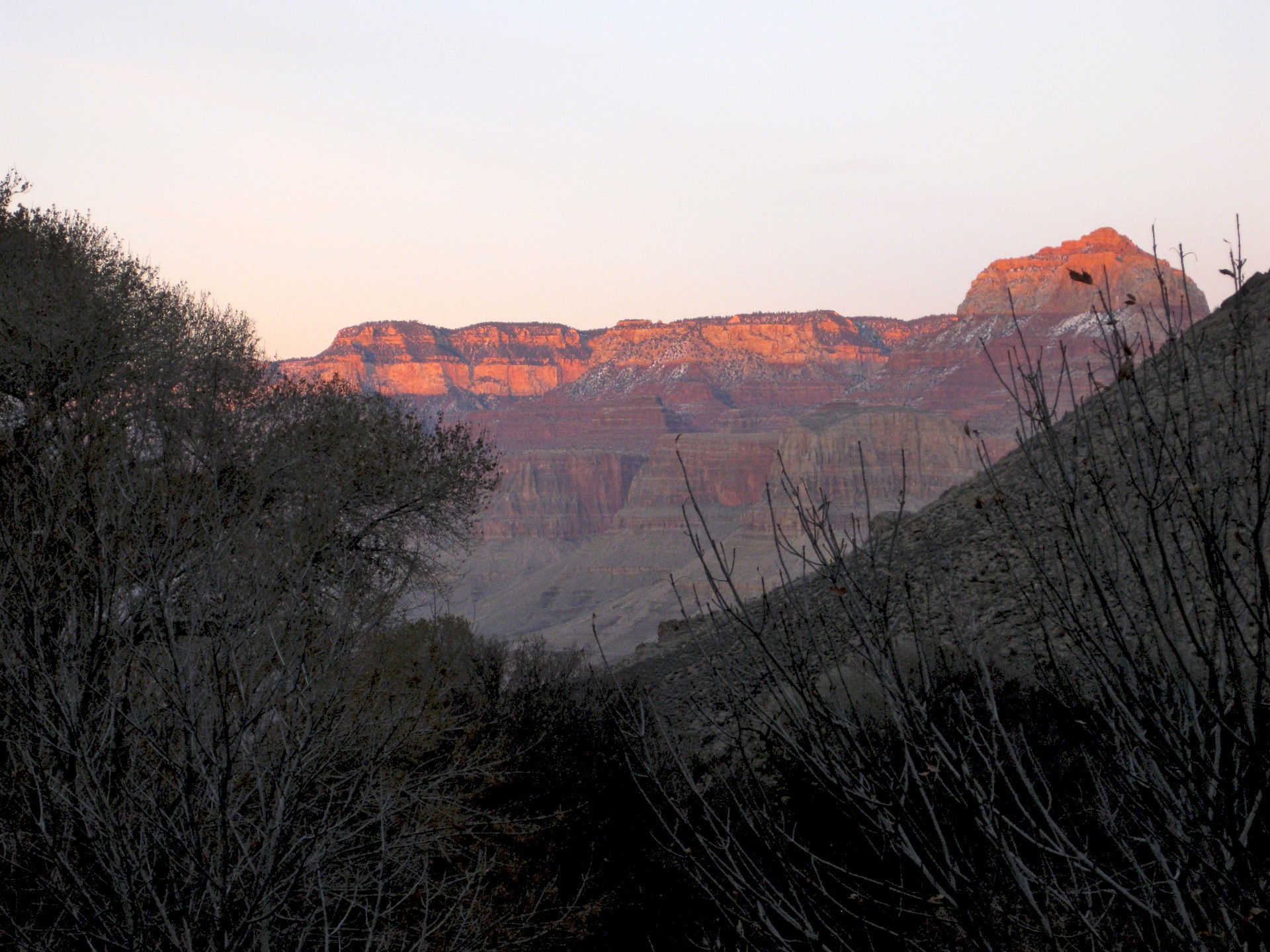
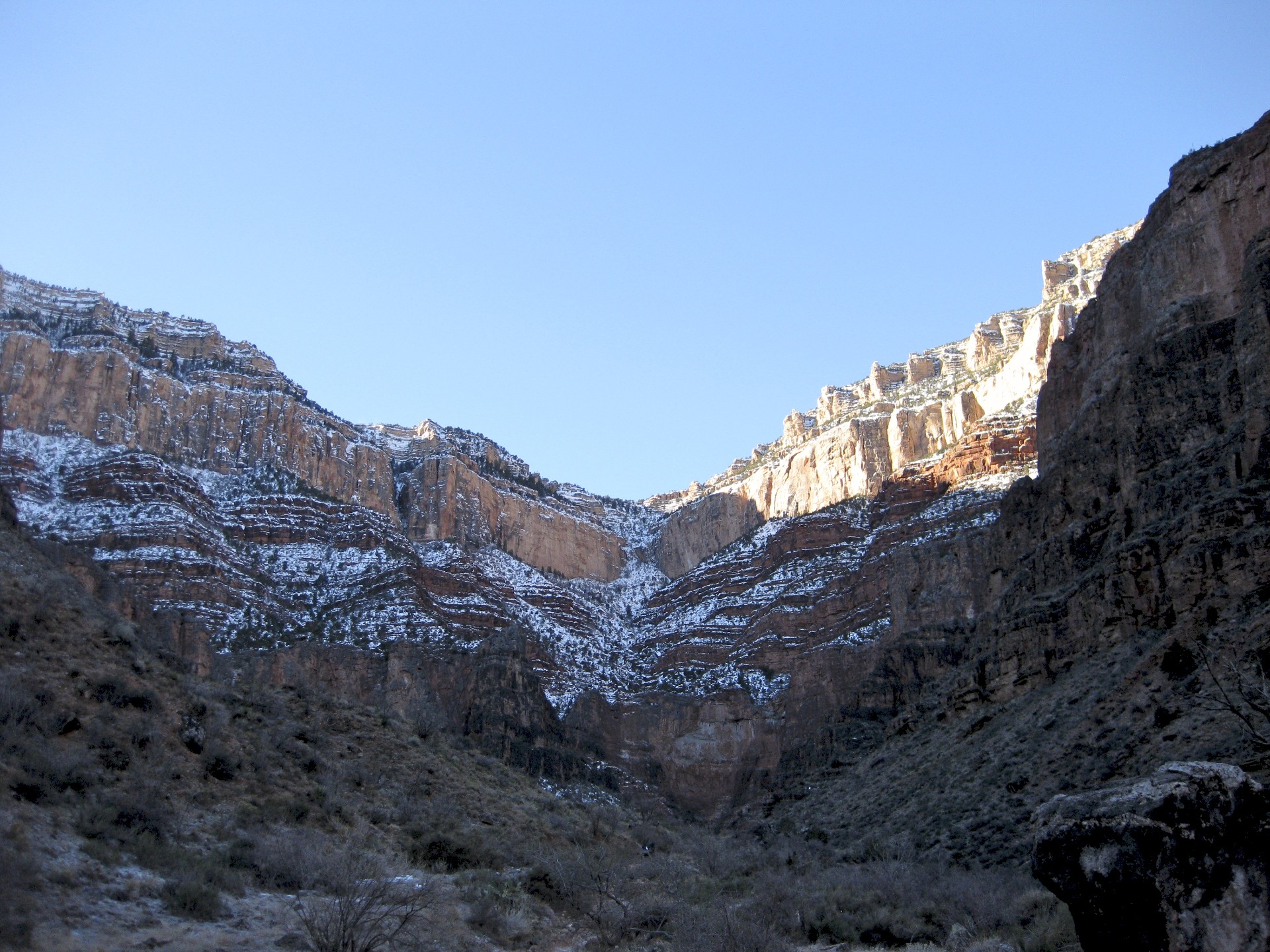
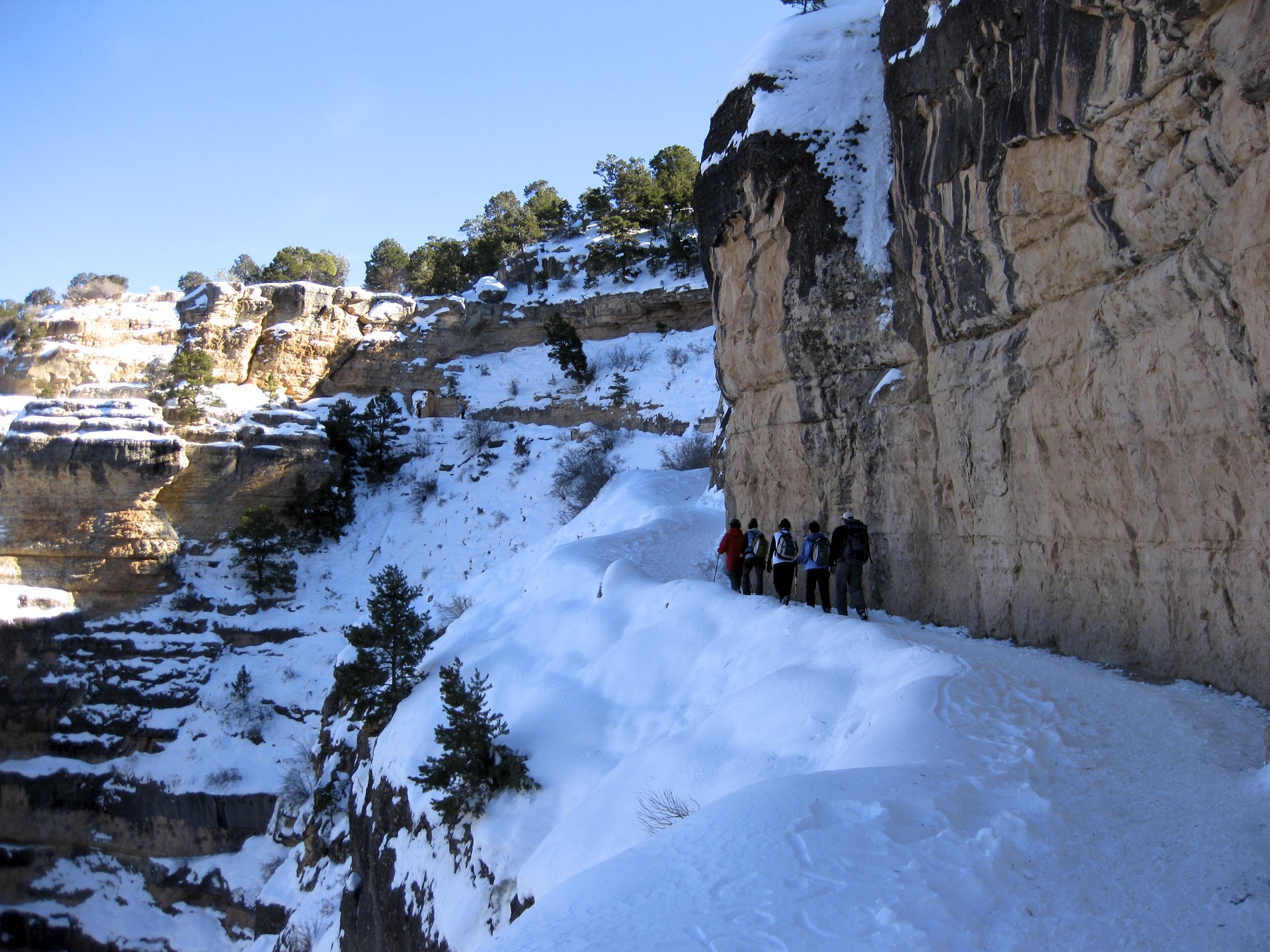
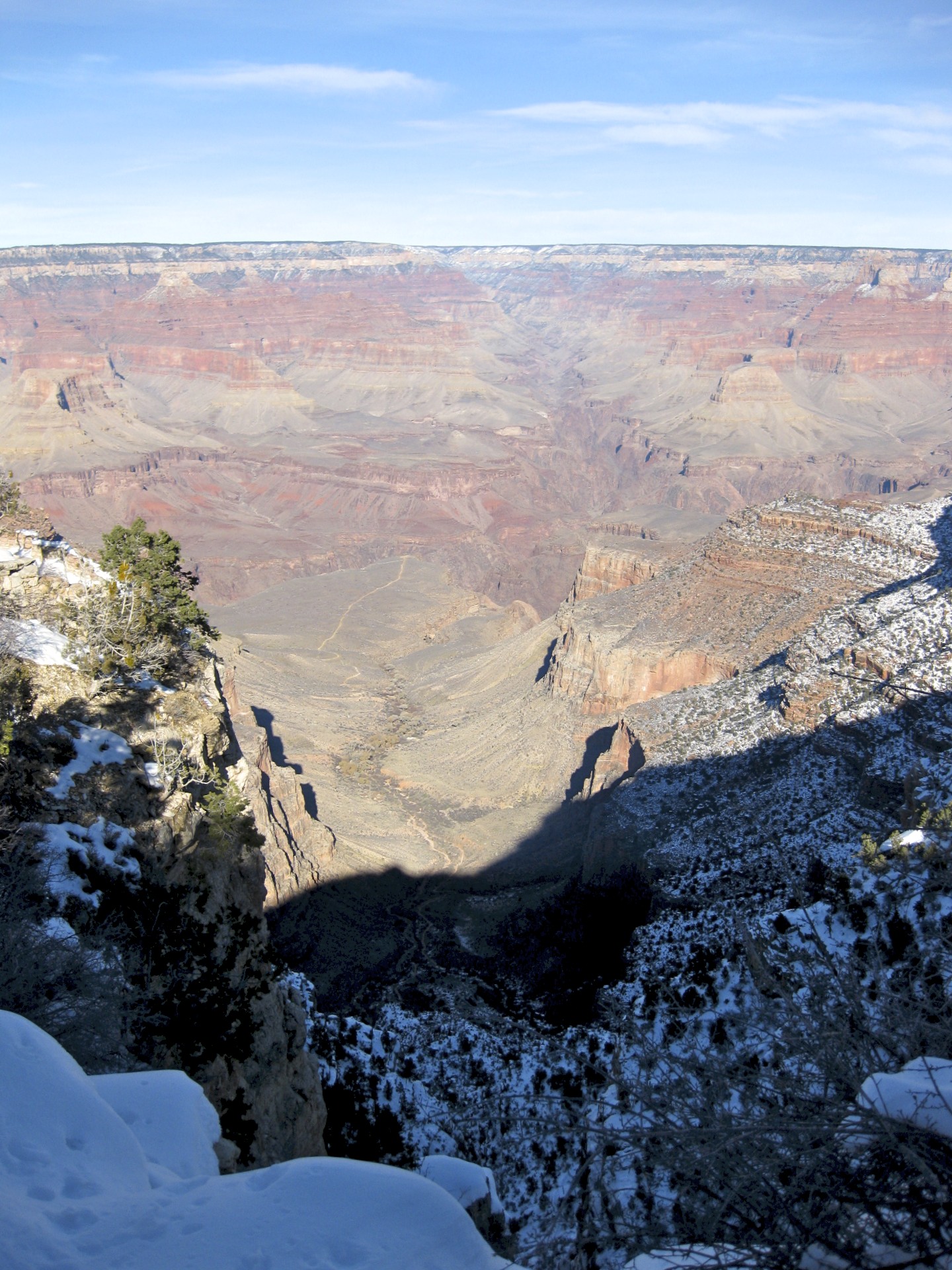
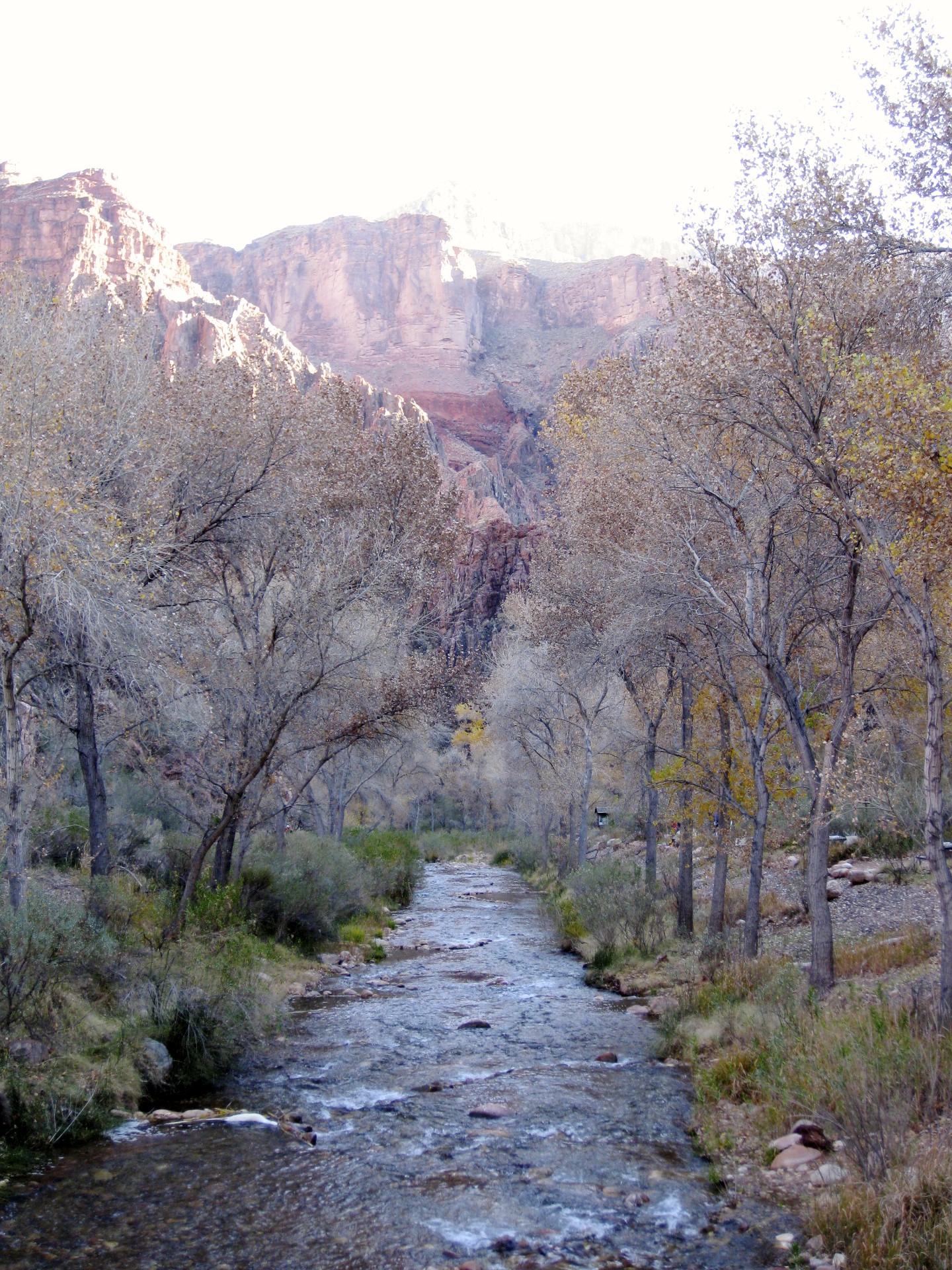
Whenever I get back to civilization after climbing some mountain or traversing some canyon I always feel like a conquering general triumphantly returning from battle. As I make the long walk back to the car, battered, bruised, and stinking a stink that you can only stink after not having showered for multiple days of intense physical activity I hope that the masses in t-shirts and jeans take notice and realize that there is a whole world out there beyond the paved sidewalks and railings with interpretive signs. Unfortunately, sometimes they do.
The route I took was a big loop, and the 2 halves of that loop were very different from one another. The South Kaibab Trail that I followed on the way down follows the peak of a ridge that juts out into the canyon. As soon as you are away from the rim you are completely exposed to the sun, and even in winter with the temperatures barely in the 30's you can feel how powerful it is. There is no water on this trail, natural or otherwise, as it covers 4,780' of elevation over 7 miles. Trying to hike up it in summer in triple-degree heat would be near suicide for anyone even slightly less than completely prepared. There are no camping areas on this trail, as trying to camp without a water source would only hasten the inevitable.
Getting to the bottom is an experience in itself. You can't see the river from the trailhead, just the plateaus that jut out from under the rim. You don't actually see the river until you make it out to the edge of one of the plateaus, and even then it's just a peek. Bright Angel Campground is on the north side of the river and the means of crossing it are 2 suspension bridges, appropriately named the Black Bridge and the Silver Bridge. Heading down South Kaibab and walking through the tunnel to the Black Bridge gives notice that as harsh as the canyon floor is it is not a wilderness, people have come to this place and conquered it. A few yards beyond the north end of the bridge are the foundations of ancient native ruins that remind you that the guys who built the bridges weren't the first ones to conquer it either, not by far.
The Bright Angel Trail that I took on the way up follows the bottom of a side canyon which contains not only a natural creek, but also the water main and pumping infrastructure that feeds the South Rim visitor center from a spring near the north rim. The trail is almost completely sheltered from the sun by the steep canyon walls and water is plentiful here, although filtering water from the creek wasn't even necessary thanks to the taps conveniently placed on the water main. The Indian Garden campground about halfway back up to the rim is like a little oasis on the creek, surrounded by cottonwood trees. This campground and its reliable water supply are a key stopping point for the return trip. Above the camp the canyon comes to a very steep headwall. Rather than the constant incline of South Kaibab, the Bright Angel gently rises until it comes to the headwall, at which point it turns into switchback hell as it desperately tries to climb up the near-vertical face of the canyon. I remember very clearly reaching the spot where I realized "Wait, I'm going to climb that!?!". Up until that point I was sure the trail must go around some unseen corner and up some side canyon rather than the almost perfect wall I had been staring at all morning.
There is one thing the two trails share in common: you could never get lost on them. All you have to do is follow the never-ending stream of mule crap. The Bright Angel Campground at the bottom of the canyon is just opposite the Phantom Ranch. Those visitors who want to see the bottom of the canyon up close and personal but don't care to walk can ride a mule all the way and back for a few hundred bucks. For a few bucks more you can have another mule hump down up to 30 pounds of whatever junk you care to have with you at the bottom of the canyon. The Phantom Ranch with its cabins, hot meals, and full service bar cater to the mule tourists. How does all that food, booze, and the resulting garbage get back and forth you ask? Why, more mules of course. I was fortunate enough to be there during the "off-season". I can only imagine what it's like in the summer when there are many more mules and their turds are baking in the sun rather than freezing into the snow.
Snow isn't what most people think of when they think of "Arizona" or any desert in general, but the top third of the canyon is currently covered in snow. This is a desert so there is very little moisture here, but the rim is also at 7,000' elevation and stays cold throughout the winter so what does fall tends to fall as snow and stick around for a while, and it adds up over time. Just below the south rim is where the sun never shines throughout the winter, this makes the snow situation even worse.
Let me say straight away that I don't really like canyon hiking or "canyoneering" as it's called. The problem is that it usually takes twice as long to get up a hill as it does to go down it and in a canyon what goes down must come back up. When you climb a mountain and have to abort you go downhill, which means you can usually get out of trouble twice as fast as you got into it. In a canyon you have to abort up, which means it takes twice as long to get to safety. The Grand Canyon, just like any desert, is definitely a dangerous place. The canyon only makes it worse because it is a trap. We humans need lots of water to survive, especially when we try to work in the heat. The harder a person struggles to get out of the canyon the more water he requires, but all the water is down low here. The more successful his struggle upwards the further he is moving away from the water that he needs to survive. It scares me how quickly and easily I got down to the bottom, it only took a bit over 4 hours. As expected getting back out took over twice that in hiking time plus a full night's rest and 3 square meals. I ran across a few people who apparently hadn't figured this out. One that really sticks out in my mind was a day-hiking couple who I ran into on my way down at around 2 in the afternoon after I had been hiking for about 4 hours. Assuming that they could go uphill at the same speed as I came down puts them at the rim a half hour after sunset. Assuming the more likely 8 hour uphill travel time they would reach the rim around 10pm. They had no backpacks or flashlights, were wearing jeans and sneakers (remember kids, cotton kills), and were otherwise completely underdressed for the bitter cold that sets in on the desert once the sun goes down. It hadn't even occurred to them that they might not make it back to the rim, but it didn't phase them. They just plowed on up the hill oblivious, hopefully they made it.
As for the rest of the tourists, it still shocks me at how unprepared some people can be, how over-loaded other people are, and how abjectly stupid others can be. I went down into the canyon prepared to survive on my own if necessary. It was convenient for me that there was clean running water, but the backcountry information indicates that hikers should be prepared to purify water in case the pipes freeze and/or break (not that unlikely with pipes running along the surface in the middle of winter) and I was. I can guarantee that the majority of people in that canyon would have been in trouble if they didn't have tap water available. The irony is that of one family who probably would never think to bring a water filter weighing a few ounces brought not just one but two Coleman propane stoves along with the requisite heavy propane tanks and the family’s 70+ year old grandparents, one of whom required a cane to walk. The father of the family was complaining to me about how tough it was to get the grandparents down into the canyon so I have no idea how they eventually got them out. This of course was eclipsed by the 3 guys walking down into the canyon as I was leaving, two of whom were carrying extremely large duffel bags and the third carrying what looked like a Wal-Mart sleeping bag rolled up with beer cans stuffed in the ends. I saw one of them slip on the ice on a switchback below me as I was rounding a corner, I just kept walking. There was nothing I could say to convince them that there was something wrong with what they were trying to do.
At first it occurred to me that this is a harsh place and people aren't supposed to be here, that we merely survive because of our equipment and infrastructure, but the native ruins make me realize that people are supposed to be here, and they have been for a very long time. The problem we have is quantity, too many people are in this place. They are brought in from all over the world by the busload and trainload, their food is trucked in and carried around by mules, there are pipes laid across the bottom of the canyon to get them water, at one point they even supplemented the water supply with deliveries by train. These people are lulled in by the presence of infrastructure and rangers to protect them. The natives that lived here didn't need buses, or trucks, or pipes, or trains, or even mules. There were just fewer of them, and they didn't exceed the very limited capacity of this place. If they had exceeded it they would have died.
Lest I forget to mention, the canyon itself is a beautiful place. It's tough to notice when you're concentrating on where to put your feet so as to avoid both the ice and mule turds, but every once in a while you get a chance to look up and remember where you are. I somehow managed to take 200 pictures while I was down there. I know I'm going to kick myself for most of them (did I really have to take 3 pictures of that same stupid rock from 3 different elevations?) and most pictures don't do the place justice anyways. They always seem to come out flat, and make 2 very different features look the same. I'll have to sort through them and see which ones really stand out. The lighting is definitely weird down there. The sun doesn't do that whole rise in the east set in the west thing. Instead the sky gets light in the morning, then eventually the sun peeks up over the south rim before ducking back down, and then eventually the sky gets dark again. Beyond the mules and humans I can also attest that the canyon is inhabited by deer, bighorn sheep, and california condors (of which there are only 172 in the wild and I have pictures of 2 of them). The sheep and deer don't really care too much about people (I came face-to-face with a bighorn when I walked around a corner, and a deer nearly stepped on my bivy, with me in it). The condors unfortunately kept their distance, but I took lots of pictures so hopefully a few turned out alright.
All that said, Yosemite is still my favorite.
Top ten things they didn't teach you in Boy Scouts (but probably should have):
1: The air mattress that you meticulously squeezed the air out of at sea level will be nearly fully inflated at 7,000 feet and impossible to remove from its bag
2: The tent that was damp when you went to bed will be frozen in the morning, and impossible to insert into its bag.
3: The tent poles that were damp when you went to bed will be frozen in the morning and impossible to disassemble.
4: Your water filter will freeze, if you let this happen it will cease to be a filter. Keep it in your pocket and sleep with it
5: Water freezes from the top down. If this starts to happen the water at the bottom of your bottle ceases to be useful to you. Store your water bottles upside down and sleep with them
6: It takes about 30 minutes to get dressed in a bivy, plan your midnight pee accordingly or bring an extra empty water bottle
7: When sleeping with both a water bottle and a pee bottle make sure you can tell the difference between them in the dark
8: Titanium sporks will freeze, you don't want to use them in this condition
9: Your sunglasses will freeze, you don't want to use them in this condition
10: Toothpaste will freeze, you don't want to use it in this condition


















- Acadia National Park
- Adirondacks
- Aerial
- Airstream
- Ancient Bristlecone Pines
- Anza-Borrego
- Appalachian Trail
- Arches National Park
- Backpacking
- Bad Larry
- Bears Ears National Monument
- Boatpacking
- Boston
- Bryce Canyon National Park
- Canoeing
- Canyon de Chelly National Park
- Canyoneering
- Canyonlands National Park
- Capitol Reef National Park
- Caribbean
- Catskills
- Cities
- Climbing
- Colorado National Monument
- Colorado Plateau
- Death Valley National Park
- Europe
- Fisher Towers
- Grand Canyon National Park
- Grand Staircase-Escalante National Monument
- Grand Teton National Park
- Gunks
- Hiking
- Iceland
- Joshua Tree National Park
- Lassen Volcanic National Park
- Manzanar National Historic Site
- Mojave Desert
- Mojave National Preserve
- Mountaineering
- Mt Washington
- Mt Whitney
- Natural Bridges National Monument
- New York CIty
- Pacific Northwest
- Petrified Forest National Park
- Pinnacles National Monument
- Red Roamer
- Road Trips
- Rocky Mountains
- Ruins
- Sailing
- San Diego
- San Francisco
- Sequoia National Park
- Sierra Nevada
- Skiing
- Sonora Desert
- Spelunking
- Superbloom
- Superstition Mountains
- White Mountains
- Yellowstone National Park
- Yosemite National Park
- Zion National Park